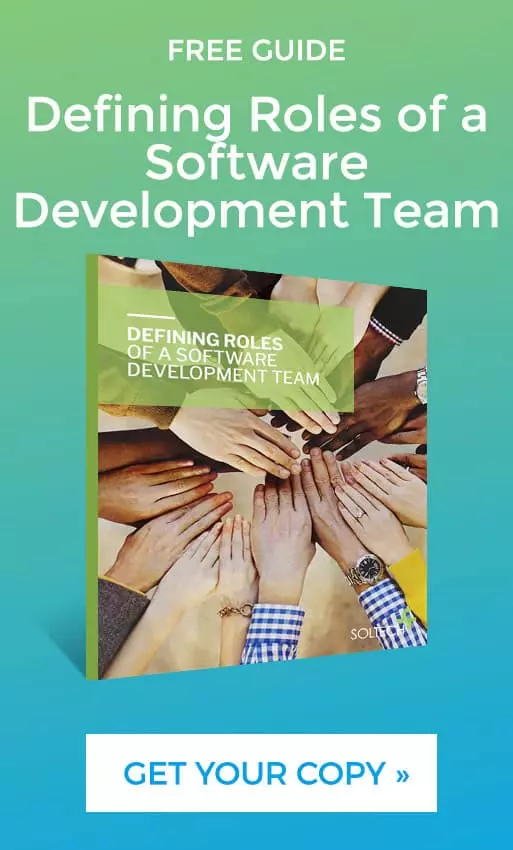
How To Hire A Software Engineer
By Ellen Jones
Hiring for careers in software engineering is a complex operation that should be tailored to your organization’s specific needs. The success of the process hinges on identifying those needs through analytical internal processes and developing hiring protocols that will allow your organization to bring on top talent at the right time.
Making a hire can be especially challenging in a market that favors job candidates. Constant development in the tech world accounts for the high number of software engineer jobs available, as organizations seek to bring forth innovative software and update existing code. The United States Bureau of Labor Statistics (BLS) projected a 25% jump in employment from 2021 to 2023 in careers in software development, with the actual number of jobs expected to jump by 411,400 between 2021 and 2031. The BLS called growth like this “much faster than the average” in comparison to occupations across the board.
The software engineering market is expected to have a global compounded annual growth rate of 8.75% by 2028, according to Yahoo! Finance, which also noted that the industry would generate $84.52 billion. With such projected national and global growth, it’s important for firms to have a plan in place for hiring software engineers.
An increase in Google searches related to careers in software engineering also reflect the growing popularity of this field. As such, your organization must be strategic in its hiring process to attract and retain the best candidates.
Why Hire A Software Engineer?
You may need to hire a software engineer for a variety of reasons, one of the most compelling being due to the role they play in driving innovation and competitive advantage for your organization.
Software engineers possess the technical expertise to design, develop, and implement software solutions that can address your unique business challenges and opportunities. Whether it’s building scalable applications, optimizing system performance, or integrating new technologies, software engineers are indispensable for transforming your ideas into tangible products and services that meet market demands.
How to Hire A Software Engineer
Having a clear hiring process to bring on software engineers can make all the difference. Here are the steps to take when preparing to make a hire:
1. Develop the job requirements.
The job requirements for a software engineering position will depend on the unique needs of your organization. However, it’s recommended that you research job descriptions of related positions to ensure your requirements align with industry standards and current trends. Understanding what software jobs are in demand is also crucial for tailoring your job requirements to attract top talent.
Start by identifying the skill sets your organization is currently missing. Do you need a source code authority or an expert app developer? Do you need a specialized software developer or a general one? And what soft skills would a candidate need? Would it be better to add team members who fit into an existing level of collaboration, or should you bring on someone who leans toward creativity above all else? Your existing team members may be helpful in this process as they’re likely familiar with the places on your staff where existing hard and soft skills are lagging. Also, focus on the types of technology your teams are using and what innovations might become part of their lexicons in the future. As you work with a partner firm on this step, an appropriate job title should emerge.
This is also a time to clearly define your organization’s values. Are accountability and accuracy most important to get the job done, or do operations center more on goodwill and flexibility?
If all this sounds like too much to take on, this is an area where a partner can be especially helpful. Working alongside a partner can make the entire process easier.
2. Confirm the type of hire you need based on the amount of risk your organization is willing to take.
You’ll probably be caught between bringing someone on full-time or “trying before you buy” with a short-term contractor. You can make a decision by first considering whether the needs you’ve identified are long- or short-term and then looking at budget constraints. Bringing on a contractor is sometimes preferable when you need to secure executive approval quickly. Taking a detailed look at your business environment can be helpful at this stage. Is your company a startup, or is it well-established? Is managerial oversight heavy or minimal? Does your overall team membership lean toward entry-level or seasoned professionals?
It’s also important to consider questions like, “What is the career path for a software developer?” Answering this specific question is crucial, as it provides insights into the candidate’s professional goals and preferences. Therefore, aligning the organization’s hiring strategy with the developer’s aspirations ensures a better cultural fit and long-term employee satisfaction. This is beneficial over the long term to help reduce turnover and ensure a productive work environment.
3. Develop your interview process.
This is the most important stage of the entire hiring process because it can either make or break the success of your efforts. The type of interview you use is crucial, so you must customize your approach to ensure you conduct a comprehensive evaluation. For instance, hands-on coding exercises or practical challenges can provide valuable insights into a candidate’s technical skills, while behavioral interview questions can help assess soft skills, communication, and cultural fit.
You’ll also need to decide on internal representatives for initial and final interviews, as well as the final decision when it comes to bringing on a new hire. Using a peer engineer — an existing team member — is almost always a good idea as you assess candidates’ skill sets. However, a peer shouldn’t make decisions that move candidates forward in the hiring process, since they likely won’t be overseeing new hires’ work. You can also decide at this point whether to lessen the internal workload when it comes to interviewing. Staffing partners can usually handle initial human resources interviews, behavioral evaluations, and technical assessments for you.
4. Determine how to get the best candidate across the finish line.
Remember, in a candidate’s market, organizations looking to hire may need to do a little extra legwork, and timing is especially important. Being ready to make a hire for a full-time or contract role when you have the ideal candidate in front of you can mean the difference between onboarding a new team member and losing a promising engineer to another firm. Make sure the proper management figures have approved your hiring budget. Also, determine who within your organization will make the offer and how quickly your human resources team can draft it. This is another juncture where a staffing partner can help by making offers on your behalf and assisting with onboarding procedures like drafting written offers and initiating background checks.
Consider A Hiring Partner
In a competitive market where multiple organizations might be courting a relatively small pool of candidates for careers in software engineering, a strategic hiring partner can provide invaluable support.
Be aware that there’s a significant difference between a staffing firm and a partner organization attuned to your specific requirements. Traditionally, staffing firms don’t spend time with clients to build job descriptions, create staffing strategies, or offer hiring best practices. Their typical role is to send companies lightly vetted candidates.
By contrast, a hiring partner works with you to determine your unique needs. Instead of simply drafting a job advertisement and deciding on salary, a partner can help you decide how to fill open positions, navigate a market where multiple organizations might be courting a relatively small pool of candidates for careers in software engineering, and pinpoint what software jobs are in demand. You can also rely on this type of organization to conduct thorough interviews before presenting you with candidates.
If a full-time hire isn’t in the cards for your company, a partner can also help you bridge your current staffing gap. Some solutions might include allowing the partner firm to take on some of the work you’ve been doing in-house or using a contractor they provide. This can help your company temporarily avoid taking on responsibilities that come with having a full-time hire, such as offering employer-sponsored benefits.
Careers in Software Development FAQs
What requirements should a software engineer have?
A software engineer should typically have relevant education in engineering, such as a degree or diploma in computer sciences or related fields. They should also have the relevant skills required to work in a software engineering position, such as a proficiency in programming languages (e.g., Java, Python, C++, etc.), an understanding of software development methodologies (like Agile or Scrum), knowledge of data structures and algorithms, familiarity with version control systems (such as Git), and experience with debugging and troubleshooting software issues. Strong problem-solving abilities, attention to detail, and effective communication skills are also crucial for success in a software engineering role.
How much does it cost to hire a software engineer?
There isn’t a one-size-fits-all answer to this question. This is because the cost of hiring a software engineer can vary depending on several factors, including their level of experience, skill set, geographic location, and the specific needs of your organization. For instance, the average salary for a software engineer ranges from entry-level positions at around $75,000 to senior roles commanding over $150,000 per year in the United States.
How long does it take to hire a software engineer?
On average, it takes about 35 days to hire a software engineer. However, just like most processes, this duration can vary significantly depending on various factors such as the complexity of the role, the competitiveness of the job market, the efficiency of the recruitment process, and the availability of suitable candidates.
Where do you find software developers?
There are several places you find software developers to hire including online job boards like LinkedIn, Indeed, and Stack Overflow Careers, where you can post job listings and search for candidates actively seeking employment. You can also tap into professional networking platforms such as GitHub or specialized developer communities like HackerRank or Codecademy, where you can engage with talented developers and even participate in coding challenges or hackathons to identify potential hires.
Additionally, attending industry events, conferences, or meetups related to software development can provide opportunities to network with experienced professionals and connect with potential candidates.
Hiring for careers in software engineering in a candidate’s market can be challenging. But with a little planning, you’ll find yourself ahead of the curve and ready to onboard the right engineer. To learn more about how to hire a software engineer quickly, download the guide below.
Ellen Jones
Director of Staffing SolutionsEllen Jones is the Director of Staffing Solutions at SOLTECH, Atlanta’s award winning software development and IT staffing firm. With a decade of diverse Account Management experience, she has expertise in project management, resource improvement consulting, and strategic discussions with key stakeholders.
Since joining SOLTECH in 2019, she has focused on building partnerships with software engineers and connecting business clients with top-tier talent for their success. Ellen’s expertise and experience in Account Management, project management, and resource optimization enable her to deliver innovative staffing solutions to SOLTECH’s clients. Her comprehensive understanding of the IT staffing industry allows her to write insightful articles on topics related to career advancement and talent acquisition. She shares her knowledge and industry insights through her writings, providing valuable guidance to professionals and organizations seeking to navigate the ever-evolving landscape of software development and IT staffing.






